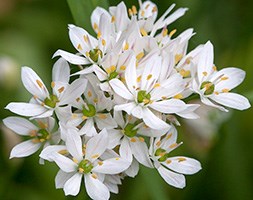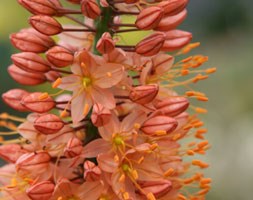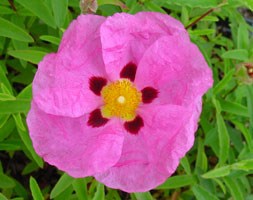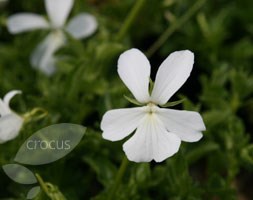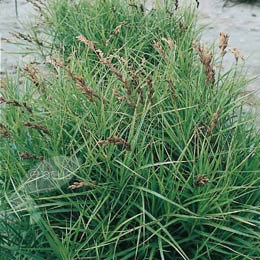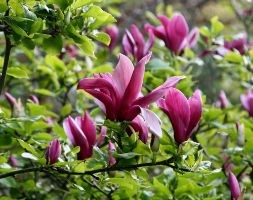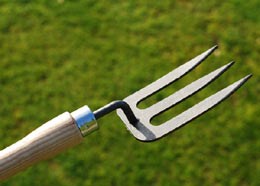Price reductions at Crocus
by Sarah - December 11th, 2013.Filed under: Crocus, Price Reductions.
Crocus reduced the price on these items today
Allium neapolitanum Cowanii Group (ornamental onion bulbs) was £2.49 now £0.99
Position: full sun Soil: fertile, well-drained soil Rate of growth: average to fast Flowering period: April to May Hardiness: fully hardy Bulb size: 4/5 Open clusters of pure white flowers appear in late spring or early summer, creating a soft, lacy effect. The flowers last for ages after being cut and the bees will find them very attractive, so try to plant them in large numbers. In smaller gardens, they look great in pots where they can sit on a sunny patio. Garden care: Plant bulbs 10-15cm deep and 10-15cm apart. Avoid excessive mositure from late summer when they become dormant. Over-large clumps can be lifted and divided in autumn or spring.
Eremurus x isabellinus ‘Cleopatra’ (foxtail lily bulbs) was £2.99 now £1.99
Position:full sun Soil:fertile, sandy, well-drained soil, including alkaline soil Rate of growth: fast Flowering period: June and July Hardiness: fully hardy Bulb size: grade one (ie. the largest) Stately, slender spikes packed with burnt orange flowers soar above strap shape shape, bluish-green leaves in early and mid summer. This spectacular foxtail lily makes a bold statement towards the back of a sunny, well-drained border. It’s best partnered with late-flowering perennials and tall grasses which help to mask the plant’s short lived foliage. Foxtail lilies need to be planted in fertile but well-drained soil with the crown not far below soil level. They start to grow in late winter and spring, gathering their strength before they produce their towering flower spikes in summer. Each flower spike has hundres of flowers which open from the bottom upwards, creating a stunning effect. They thrive in the sunniest spot in the garden, especially if the base of the plant isn’t shaded as this can decrease the number of flowering spikes produced. Garden care: In September every three to five years carefully lift and divide congested clumps. Replant the strongest crown on a layer of sharp grit, spreading out the roots and covering them with a thin (5cm/2in) layer of soil. In frost-prone areas cover with a dry mulch of fern leaves.
Cistus x purpureus (rock rose) was £5.99 now £2.99
Position: fu ll sun Soil: moderately fertile, well-drained soil Rat e of growth: average Flowering period: June and JulyHardiness: frost hardy (needs winter protection in cold areas) Cistus originate from dry, rocky parts of the Mediterranean and Canary Island s, and so are drought-tolerant and low maintanance. They produce masses of flowe rs in midsummer, but each lasts only one day. In June and July, Cistus x purpure us produces crumpled, dark-pink flowers splashed with maroon at the base of each petal. Try this rounded, sun-loving, evergreen rock rose towards the front of&n bsp;a sheltered, sunny, well-drained border, or in a container. It will tolerat e chalky soil and salty air. Garden care: After flowering, pinch back young plant to encourage a bushy habit. Lightly trim or cut back any stems that spoil the symmetry of the plant. This plant should never be pruned ha rd.
Allium hollandicum (aflatuense) (allium bulbs – syn aflatunense) was £3.99 now £2.99
Position: full sun Soil: fertile, well-drained soil Rate of growth: average Flowering period: June Hardiness: fully hardy Bulb size:10/12 They look spectacular grouped in a pot, or in a sunny border, dotted in groups among ornamental grasses, or as part of a Mediterranean scheme. Alliums look best planted between medium-sized herbaceous plants, which help to mask the strap-like leaves, which fade by the time the flowers appear. Garden care: Plant bulbs 15cm deep and 15cm apart to enjoy the full effect of the flowers. Avoid excessive soil moisture, and split and divide large clumps in autumn or spring.
Viola cornuta ‘Alba Group’ (horned violet) was £5.99 now £4.49
Position: full sun or partial shade Soil: fertile, humus-rich, moist, well-drained soil Rate of growth: average to fast-growing Flowering period: May to August Flower colour: pure white Hardiness: fully hardy Masses of subtly scented, pure white flowers from May to August and toothed, oval, fresh green leaves. This horned white violet is ideal for the front of a moist, well-drained border in sun or partial shade. Spreading in habit, the evergreen foliage should be cut back after flowering to maintain a neat, compact shape. Garden care: To minimise the risk of fungal diseases always use new, sterilised compost for container plants. Deadhead regularly to prolong flowering.
Carex muskingumensis (palm branch sedge) was £6.99 now £4.99
Position: full sun or partial shade Soil: moisture-retentive soil Rate of growth: average Flowering period: June to July Flower colour: golden-brown Other features: bright-green leaves Hardiness: fully hardy A beautiful ornamental grass with bright-green leaves and brown flower spikes in mid to late summer. A useful groundcover plant it also looks good planted in a sunny or semi-shade border with large-leaved perennials. Garden care: Cut brittle, dead foliage right down to the ground in late winter, well before new growth appears.
Magnolia liliiflora ‘Nigra’ (black lily magnolia) was £24.99 now £14.99
Position: full sun or partial shade Soil: moist, well-drained, slightly acidic soil Rate of growth: slow-growing Flowering period: June to September Flower colour: dark purple-red Other features: slightly fragrant flowers Hardiness: fully hardy A stunning, deciduous magnolia with a compact habit and dark purple-red flowers which appear from an earlier age than most magnolias. The goblet-shaped blooms are produced from early summer, and then intermittently into autumn. A lovely shrub for a sunny or partially shaded spot out of strong winds. Garden care: Requires minimal pruning. Remove any broken, diseased or crossing branches in midsummer. The best time to plant is in April, adding plenty of peat to the planting hole, in a sheltered spot. Mulch in spring with manure and leafmould, especially on dry soils.
Rosa Tess of the d’Urbervilles (‘Ausmove’) (PBR) (rose Tess of the d’Urbervilles (shrub)) was £26.50 now £17.99
Position: full sun Soil: fertile, humus-rich, moist, well-drained soil Rate of growth: average Flowering period: June and September Flower colour: bright crimson Other features: excellent cut flowers Hardiness: fully hardy Attractive, bright crimson, deeply cupped blooms when newly opened which become less formal as the petals turn back with age. A robust, bushy shrub that has large dark green leaves and fragrant flowers, which bow the stems with their weight, to give an elegant, arching effect. It looks great planted in the middle or towards the back of a sunny border. All our roses are grown in an open field and then dug up when the weather conditions are right in October or November. Some suppliers send out their roses as ‘bare root’ plants (ie without pots or compost), but we pot ours up as it helps to keep the roots hydrated and in good condition. As they are dormant throughout the winter, they will not produce any new roots until spring, so don’t be surprised if the compost falls away from the roots when you take them out of their pots. The roses can be kept in their pots throughout the winter provided they are kept well fed and watered, however ideally they should planted out as soon as possible. They will already have been cut back so no further pruning will be required, apart from snipping off any tips that have died back. Routine pruning can begin in late winter the year after planting. Garden care: If planting in winter, choose a frost-free spell when the soil is not frozen. Roses are quite deep-rooted plants so dig a deep hole roughly twice as wide as the plants roots and mix in a generous amount of composted organic matter. A top-dressing of a general purpose fertiliser can be worked into the surrounding soil and we also recommend using Rose Rootgrow at this stage to encourage better root development. This is particularly important when planting into a bed where roses have previously been grown as Rose Rootgrow is said to combat rose sickness (aka. replant disease). Remove the plants from their pots and gently spread out the roots before placing them in the centre of the hole. Try to ensure that the ‘bud union’ (the point where the cultivated rose has been grafted onto the rootstock, and from where the shoots emerge) is at soil level. You can judge this quite easily by laying something flat, like a spade handle or bamboo cane, across the top of the hole. When they are
De Wit long handled hand fork was £18.99 now £17.99
Handy for reaching into those hard to reach spots towards the back of the border or raised bed, these hand tools have a longer, shock-resistant, ash handle that features a unique ‘bulb’ design at each end, which will help keep your hands from slipping. The Dutch are rightly regarded as makers of the finest gardening tools. De Wit have been around longer than anyone. They started in 1898 and the 4th generation of De Wits are now in charge of the business; one is a trained wood turner, the other trained as a blacksmith. De Wit forge their tools from carbon steel in the traditional way. Carbon Steel is naturally tougher than stainless steel and is not prone to metal fatigue. De Wit also burnish their steel. This not only helps to protect it for longer but gives it a patina that blackens it – just like traditional English tools from the Edwardian era. All De Wit tools have turned hardwood handles of oiled Ash. Ash is not only very strong but resists shock better than woods like oak or beech, which is why it was traditionally used for Axe handles. The result is a beautiful tool to hold in the hand but rugged and durable. They feel so natural to use that they are like an extension of the person that uses them. These tools will give you a lifetime of use, until you hand them on. Measurements: Length 63cm x width 8cm x height 4.5cm







